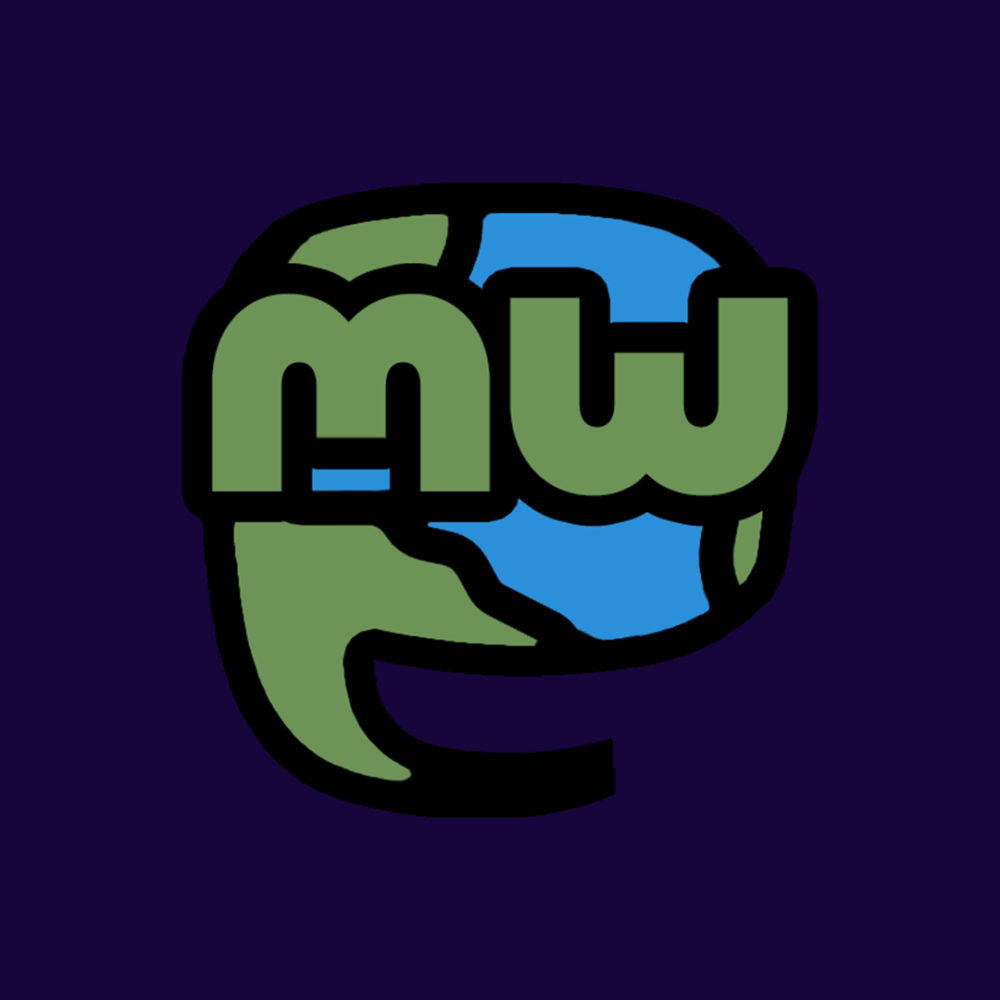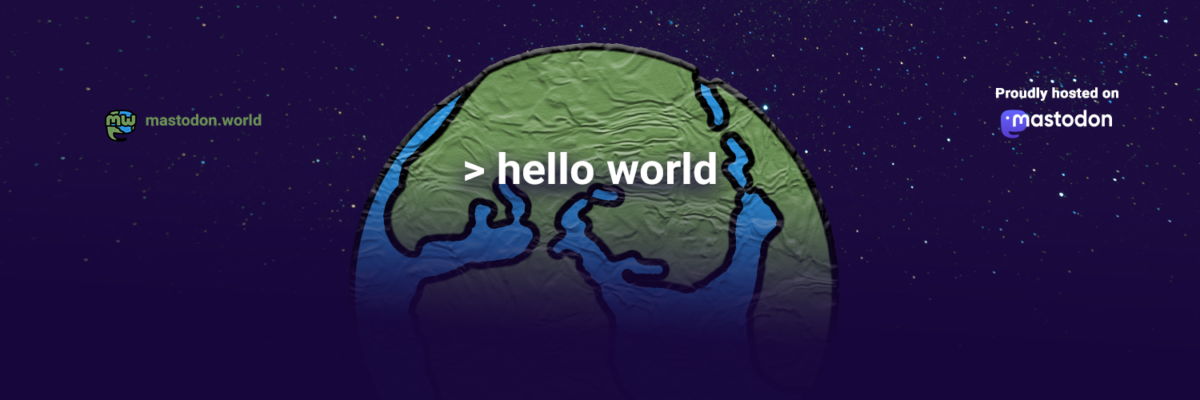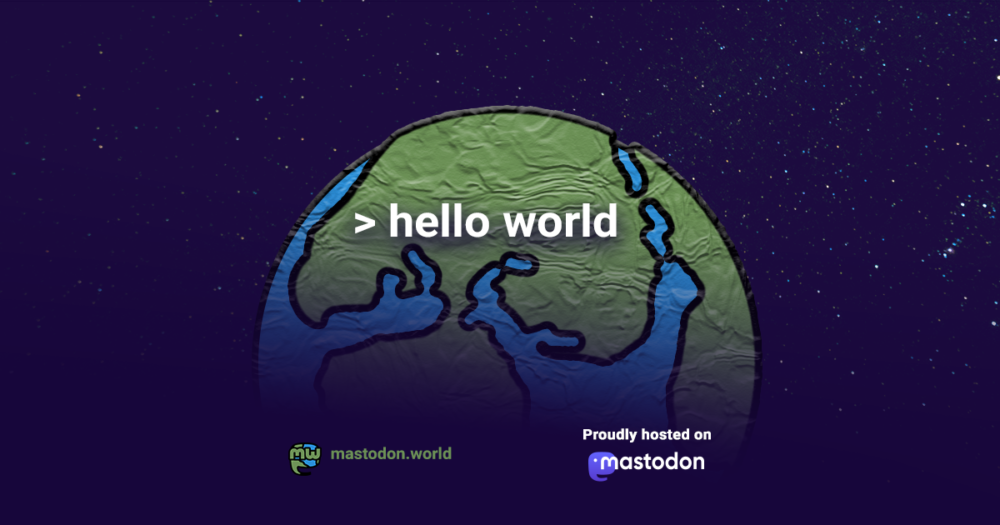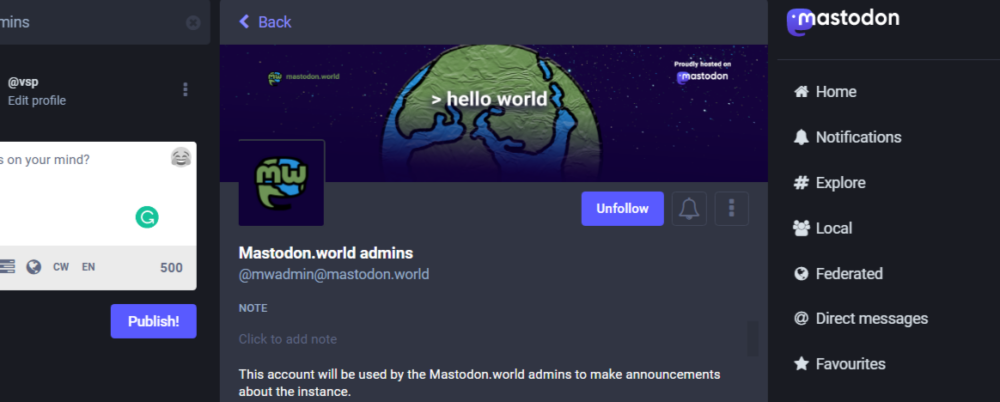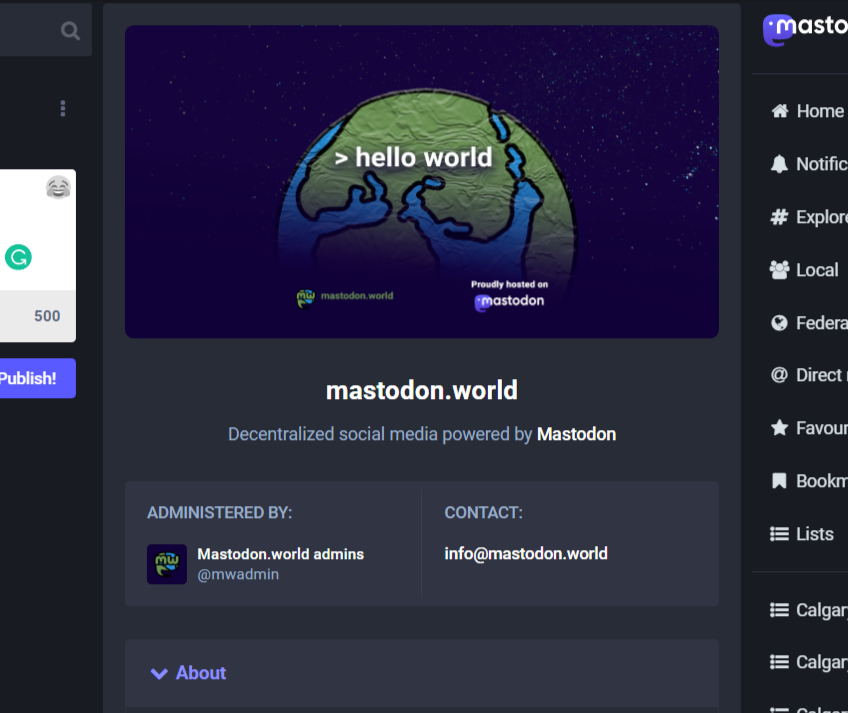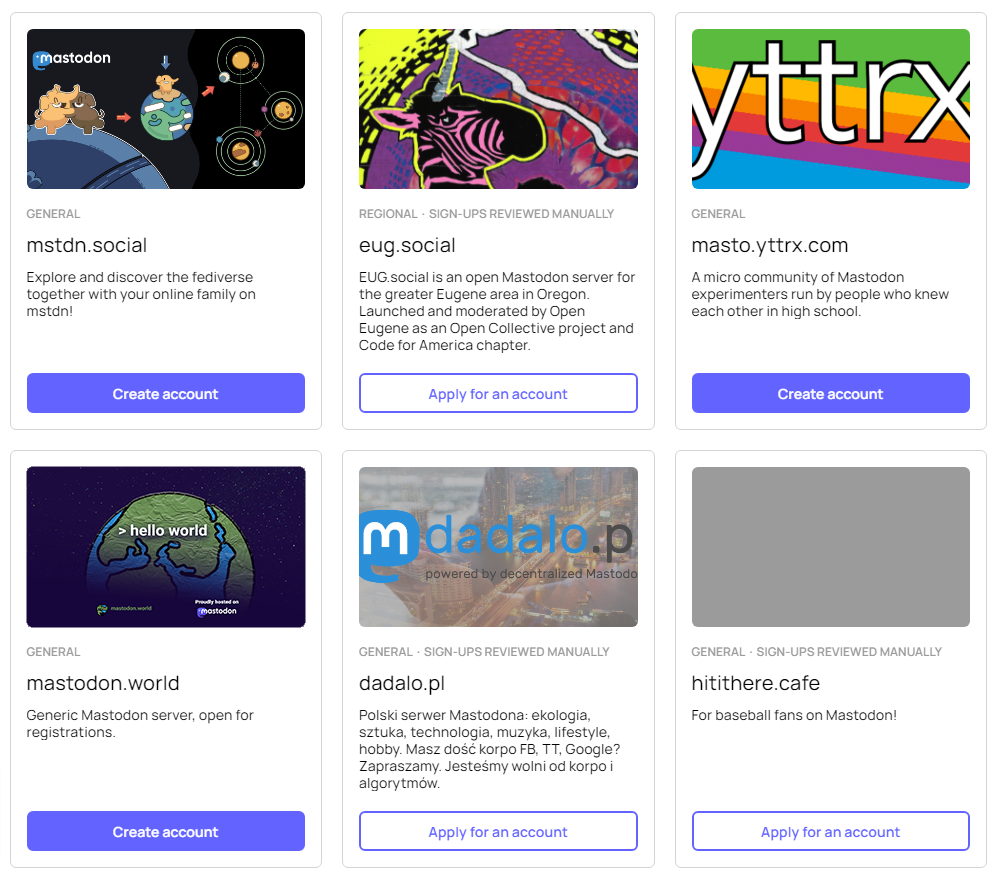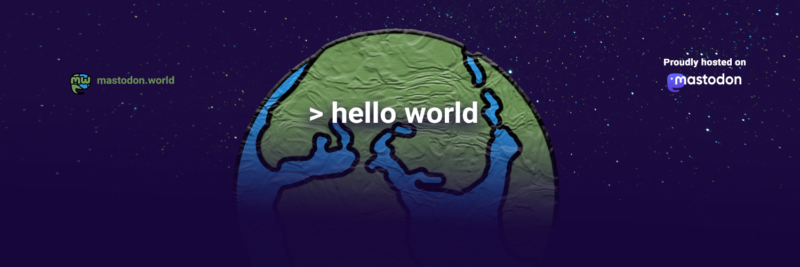
If you’ve been following along with the internet of things, there has been some noise surrounding various social media platforms in the last six months or so. Some of it has been good, others much less so.
On my end, I’ve spent most of the last two years or so with my Twitter account on private, chatting with peers from university and only opening up my account for a few rare moments. One part of it was making a conscious decision to look inwards after a decade of having a public-facing account, and also to spend more time focusing on deeper connection.
That aside, when a new operator took over my preferred social media platform I was already looking for another space to place my digital roots. I was a little under the weather in November, so it also helped that I could put some of my energies into learning more about this different corner of the internet.
Initially, I bumped into some of my friends and colleagues making the jump to a new (err, new to me) service called Mastodon. I also noticed some of my favourite journalists porting over, along with George Takei, Senator Paula Simons and the team around Mozilla, Vivaldi and (soon) Tumblr, the decision seemed quite reasonable to begin making my migration over to the new platform.
The thing is… it wasn’t like any other platform I’ve ever been on.
Initially released in 2016, Mastodon was developed by a German software developer by the name of Eugen Rochko, and was primarily home to FOSS (free and open-source software) enthusiasts, programmers, various vulnerable populations (who sought to create their own places of community away from the turmoil of other platforms), a diaspora of Indian nationals who exited Twitter over moderation policies, and those connected with a variety of different platforms and services through a backend service called ActivityPub (sometimes referred to as the ‘Fediverse’).
It also… wasn’t one platform.
It was hundreds.
Actually, when I peeked under the hood, it was thousands. And then when I dug even deeper, there was an extended network of clients, servers and platforms that spoke to each other, hosting from one person to hundreds of thousands of people. But that’s a topic for another time. (And, if you’re interested in it, I have been spending some time reading Evan Prodomou’s blog on the subject.)
It did, however, make choosing a server rather awkward.
When spoiled with a riches of options, it’s hard to make a perfect pick. So I didn’t make a perfect pick.
Instead of perfect, I looked around and saw that there was a fairly reasonable person just chatting with new members of his instance. So, upon giving his Mastodon account a quick scan, I said, well, this works. @Ruud was engaging with folks, answering their questions and, on further reflection, I settled on my migration: to mastodon.world.
For me it’s simple: if a person can make reasonable decisions a decent chunk of the time, then be ready to be wrong and rely on others to get to mostly good decisions most of the time, that’s a good spot to be in. It’s trading perfect for the promise of always improving and always becoming a better space and place for people.
So, mastodon.world it was.
Further to this, the server you pick often doesn’t matter too much, as they’re mostly all connected with one another, so you’re able to participate, engage and share with other members of other servers and communities. So that initial introduction of myself was placed excellently with others, in one spot that was an open space for the many new members.
However, there were one or two things that I felt was missing. Where I saw a need, as I worked through learning the platform and its extended communities, was when I bore witness to the absolute treasure trove of emojis, graphics and small icons used by other instances and services.
And I wanted one for my server. Hence, I made one.
It’s one of the principles of FOSS (remember this acronym from earlier?), for the seeking of and co-generation of solutions that face a member of a community or a set of developers working on a product.
It’s software-focused and relies on individuals coming together in a broader sense to contribute to a greater goal.
So, in that spirit, I made something, it was implemented within hours and placed for the use of members of this community that had, in the space of 30 days, grown from a little over a hundred netizens to tens upon tens of thousands.
Within time, it even became the logomark of the instance when the administration team (Ruud at this juncture had recruited a squad of administrations) created a shared account for their use. (Another rational move that is good policy and sensible best practice.)
The “> Hello world” text in the above header wasn’t created by me… but I understood its meaning, though. It’s a concept relying on the software community underpinning a large part of Mastodon: and it highlighted the initial text that is often included in tutorials on learning new programming languages for students of computer science.
In these guides, it would typically share with the new programmer a quick way to say ‘hello world,’ with that specific toolset or kit making it possible.
So, for a Mastodon server, it made eminent sense that we were going to say hello! Particularly with a server with the domain name having “world” appended to it, and being the initial landing spot for tens of thousands of new Mastodon members.
The one struggle with it, however, is that most individuals wouldn’t be quite familiar with this concept, particularly as the server grew to more than 140,000 users. Not everyone enjoys learning to program or would be familiar with such things, and its approach wasn’t, well, approachable.
Because of this, I sat down and thought about how I’d represent it. And, I began drafting on a sheet of looseleaf paper that I had, doodling small stars and incorporating some of the elements of the Mastodon emoji I created (which was based on the Mastodon logomark, which you can find here).
Eventually, I settled on the below.
There are three concepts I want to highlight for this series of design elements.
Hello World:
- The design kept the initial text of “hello world,” but swapped it to a font that was closely aligned with the branding template provided by the main Mastodon branding package.
- It also connected with the central mission of introducing someone to the server and as an introduction to the world.
The World:
- Where is that on earth?: Rather than focusing on one part or another part of the world (like North America, Asia or otherwise), I chose to look back to the time before mastodons wandered the earth. I took inspiration from the supercontinent Pangea, which had all of the continents connected as one super-continent. As a theme, I appreciated the metaphor of being united as one singular world.
- In stark contrast to the stars in the background, I had the planet take on a bit more of a craft and paper motif. That way, it could call back again to that effort to conjure something new and present that raw act of creation. Also, it showcased an element of exploration and the expanse of space to view and engage with.
Hierarchy and Continuity:
- A goal of this effort was to create a banner that someone would see as they scrolled through the hundreds of servers that are listed on joinmastodon.org. I have an example of this included below: where servers are either without banners, have squished designed or otherwise don’t align with their core community or flavour.
- Colours: I kept the same colour combo as the initial icon, but introduced the muted purple that was shared in the original branding package from Mastodon. That way, we could have a continuity of brand, but also a minute separation with the green and blue hues of the planet.
- There was also the inclusion of a tag referring back to the Mastodon brand: and declaring that we were “proudly hosted on Mastodon,” emphasizing a connection to this larger community.
In conclusion, if you’ve been wondering where I’ve been, this is where I am: exploring a corner of the internet and helping a group of folks seeking to build a new community. I look forward to chatting with them, with you, and the entirety of Mastodon in the coming days, months and years ahead.
And, if you’re up for an adventure, consider joining Mastodon as well. If you’re a fellow Canadian there’s a wonderful server that’s been made at www.msdtn.ca or maybe even join me at mastodon.world.
Update: If you’d like to listen to a wonderful podcast about joining Mastodon, and the prairie influence on Canada’s leading server, give the below podcast a listen. It’s by Senator Paula Simons, who interviewed Chad Ohman.
You can also read Apple’s article on the subject, here. (And also see my artwork in a screenshot on the article, as well!)
